15 Home Remedies For Ascites | Types, Causes, And Symptoms
Know what causes that fluid build-up in your abdomen, leading to swelling and pain.
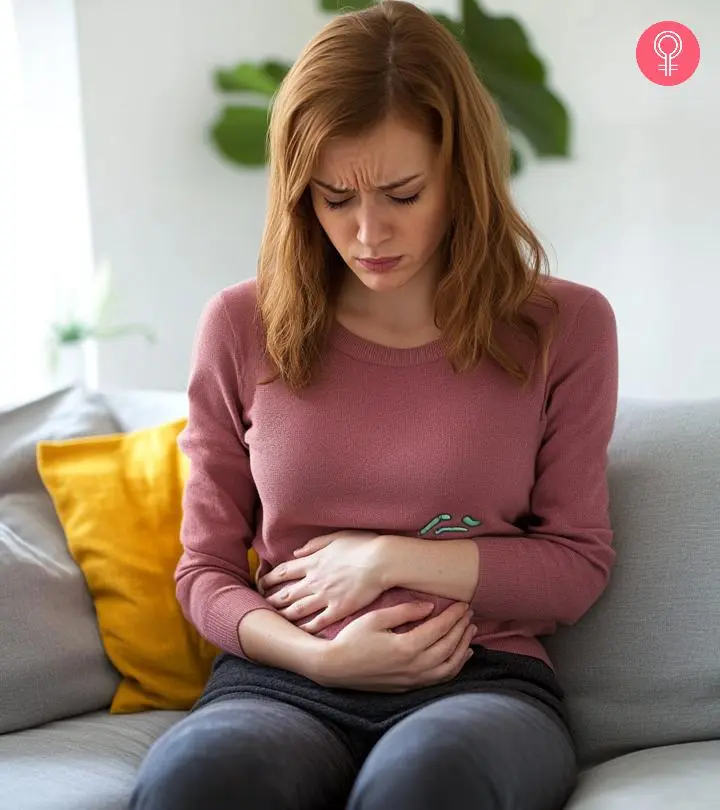
Image: Midjourney/ StyleCraze Design Team
Our bodies are machines, and they, like all machines, suffer from wear and strain. Ascites is one such issue that our bodies have to deal with. Ascites occurs due to the fluid build-up in the abdominal cavity. It can cause a lot of pain and swelling, and if it is not treated quickly enough, it might lead to the failure of organs.

Keep reading to learn more about this condition, its causes, symptoms, diagnosis, and how to treat it at household items. We have also talked about what diet to follow, foods to avoid, and some recommended yoga poses. Scroll down!
In This Article
What Is Ascites?

In simple words, ascites is a bodily disorder caused due to the build-up of fluid in the abdominal cavity. This fluid can also travel to the chest cavity and cause shortness of breath by putting pressure on the diaphragm. (1).
Key Takeaways
- Reduce salt intake to prevent ascites.
- Include foods like ginger, garlic juice, radish, and carrot juice in your diet.
- Avoid alcohol, processed foods, milk, and starchy foods like rice, potato, and corn.
- Yoga also helps stimulate blood and lymph flow in the body to treat ascites.
What Are The Types Of Ascites?
Liver cirrhosis is responsible for 85% of ascites. The table below lists the other types of ascites and what organ they are associated with (2).
Type Of Ascites Associated Body Organ/Part Hepatic Liver, Inferior Vena Cava Cardiogenic Heart Nephrogenic Kidneys Malignant Most organs of the body (with cancer) Pancreatic Pancreas
Some of the uncommon types of ascites are:
- Refractory ascites – These are ascites that recur after treatment. The patient is prone to developing various hepatic complications in such cases (3).
- Chylous ascites – This is an uncommon type of ascites. It is caused by leakage of lymph from a ruptured lymph vessel (4).
A report published in StatPearls found that people with cirrhotic ascites (fluid buildup in the abdomen due to liver cirrhosis) have a 50% mortality rate in 3 years. It was further estimated that people with refractory ascites (ascites after treatment) had a survival rate of less than 50% in 1 year.
What Causes Ascites?
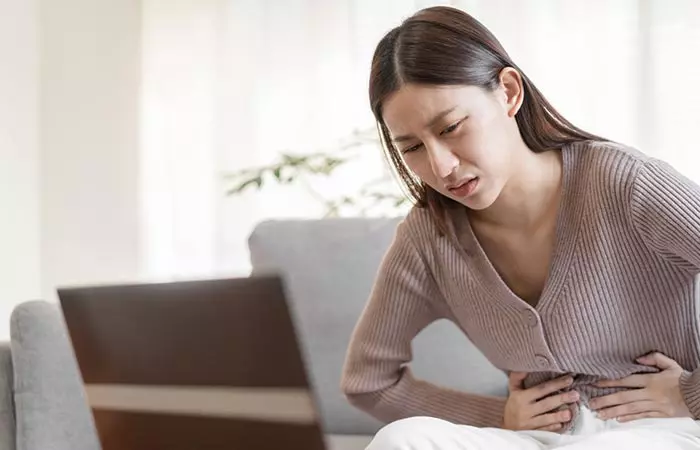
Ascites most commonly occurs due to structural damage of the liver, leading to improper function. A liver disease like cirrhosis is primarily accountable for ascites.
In cirrhosis, there is increased pressure in the liver’s main vein (portal hypertension). This happens because liver damage slows down blood flow, causing blood vessels to widen due to higher nitric oxide levels. As this worsens, the body releases hormones that tighten blood vessels and make the kidneys retain salt, leading to poor kidney function and fluid buildup in the belly (ascites), signaling liver failure (1).
Apart from this, cancers that affect different organs like the colon, stomach, liver, breast , and pancreas are another major cause that can lead to ascites. Other causes include (5), (6), (1), (7):
- Excessive alcohol intake, causing alcoholic liver disease leading to cirrhosis.
- Excessive intake of sucrose and fructose, leading to nonalcoholic liver disease leading to cirrhosis.
- Anorexia
- Portal hypertension
- Hepatitis
- Hypoalbuminemia
- Clots in the veins of the liver and heart
- Pancreatitisi A disorder caused by pancreatic inflammation that occurs when the pancreas begins to digest itself due to digestive enzymes.
- Kidney (nephrotic) issues (1)
In conditions like heart failure or kidney disease, the body tries to compensate for reduced blood flow by tightening blood vessels and holding onto water and salt, adding to the fluid buildup.
Note:
There is an epidemic of nonalcoholic liver disease in younger people from the overconsumption of sucrose (table sugar) and fructose (from high fructose corn syrup sweeteners in soda).
Symptoms Of Ascites
Common symptoms of ascites are:
- Enlarged abdomen
- Abdominal discomfort
- Fatigue
- Swollen legs
- Reduced urine output
- Weight gain
- Gastrointestinal bleeding
- Bloating
- Indigestion, nausea, and/or vomiting
- Problem in breathing while lying down(1)
Indraske, a blogger, spoke about her symptoms of ascites in her personal blog. She said, “Day to day I was noticing that I’m getting tired quicker, my legs are swollen and my tummy expanding again (i).”
In addition, when cirrhosis reaches the resistant ascites phase (the stage where the accumulation of fluid in the peritoneal cavity becomes resistant to medical management),this may activate renin-angiotensin-aldosterone system (a complex hormonal system in the human body that regulates fluid balance).This, in turn, may cause symptoms of hyperaldosteronism(excess production of aldosterone hormone) and renal imbalance (8).
 Quick Tip
Quick TipIf left unchecked, some complications may arise in addition to the ascites symptoms you notice. Learn more in the next section!
Complications Of Ascites
If not properly managed, ascites can result in severe complications, including spontaneous bacterial peritonitis (1). It is a serious condition where bacteria infects the fluid that builds up in the abdomen. This condition can develop suddenly and may lead to severe infections that require immediate medical attention. When untreated, the fluid buildup in ascites not only increases the risk of infection but also puts extra strain on the kidneys and liver, causing further organ dysfunction. Therefore, timely treatment is important to prevent these serious outcomes and ensure better overall management of the condition.
Sometimes abdominal discomfort and swelling may be caused by bloating. Check out the next section to learn how it differs from ascites.
Bloating Vs. Ascites
Bloating and ascites can be distinguished based on their severity and underlying causes. Bloating is the uncomfortable feeling of abdominal fullness and distension (9). It is commonly caused by factors like overeating or gastrointestinal issues and is usually a temporary and non-serious condition.
Ascites, on the other hand, is a pathological condition in which the abnormal fluid accumulates in the abdominal cavity. It occurs due to serious underlying conditions such as liver cirrhosis, heart failure, or cancer (1). Ascites leads to significant abdominal swelling and requires medical evaluation and treatment.
If you think you have ascites, consult a doctor immediately. They may employ the following diagnostic methods.
Diagnosis Of Ascites
After a basic physical exam and investigation of your symptoms, ascites is diagnosed mainly by two methods.
- Fluid sample – With a needle and syringe, a sample is taken from the abdomen, this fluid is tested for infection and cancer. This is called paracentesis. This procedure may help determine the underlying cause of ascites, guiding you to the best treatment options.
- Imaging – MRI, CT scan, and ultrasound are done to get a better picture of what exactly is happening inside the body and causing the ascites.
Other tests that may be done are:
- Urine analysis
- Ascitic fluid analysis
- Kidney function tests
- Liver function tests
- Varied blood tests depending on other symptoms
- Electrolyte levels (1)
In addition, peritoneal dialysis treatment method is used for patients with end-stage renal diseases or renal failures to remove renal fluids.
There are several home remedies that can provide relief from ascites and its associated symptoms. We are not saying that you can cure ascites with these remedies – because the damage is already done. A person would have to change their lifestyle completely to begin to heal the liver. The best home remedies that can help you with relieving symptoms are listed below.
Home Treatments For Ascites And Useful Remedies
1. Epsom Salts Bath For Ascites
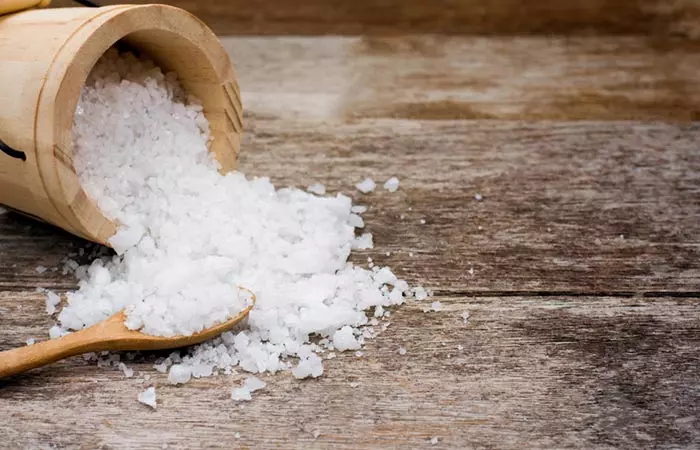
You Will Need
- 1 cup Epsom salt
- A bucket of warm water
What You Have To Do
- Add the Epsom salt to the water and mix well.
- Soak your feet in this water for 15 to 20 minutes.
How Often Should You Do This
Do this every alternate night (or every night).
Why This Works
Epsom salts detoxify the body and soothe the swollen legs that are usually seen during ascites.
They reduce the swelling and relax you (10). The magnesium ions in Epsom salts can be absorbed through the skin and assist the body in many of its metabolic functions.
2. Fenugreek Seeds For Ascites
You Will Need
- A handful of fenugreek seeds
- A bowl of water
- Strainer or muslin cloth
What You Have To Do
- Soak the fenugreek seeds overnight.
- The next morning, mix the seeds and water and strain the liquid through a muslin cloth or strainer.
- Drink this liquid to keep yourself healthy.
How Often Should You Do This
Drink fenugreek water every day in the morning.
Why This Works
When it comes to abdomen-related issues, fenugreek is surely one of the best forms of home treatment. It has hepatoprotective and anti-cancer effects. It reduces inflammation and helps in eliminating free radicals that are causing damage inside the body (11).
3. Garlic Juice For Ascites
You Will Need
- 3-4 cloves of garlic
- A small garlic press
What You Have To Do
- Chop the garlic and use a garlic press to extract the juice.
- Drink half a tablespoon of garlic juice on an empty stomach.
- If you don’t have a garlic press, chop the garlic fine and swallow with a few ounces of water.
How Often Should You Do This
Repeat this every morning.
Why This Works
Garlic is easily available in every kitchen. People suffering from ascites can greatly benefit from this. The regular use of this simple ingredient can help to reduce the bloating and tenderness associated with ascites.
Garlic is also said to possess anti-cancer properties. A Frontiers in Pharmacology study explored the anti-cancer potential of garlic and its bioactive compounds against breast cancer and other types of cancer. Garlic contains organosulfur compounds like diallyl trisulfide, allicin, and diallyl disulfide, which can target cancer cells without causing significant toxicity. Researchers have tested garlic extracts against breast, skin, ovarian, prostate, gastric, lung, liver, and pancreatic cancer. The findings, specifically in the breast cancer scenario, suggest that garlic can help prevent and slow breast cancer at different stages by influencing cell cycle arrest, survival pathways, and inflammation proteins. The study highlights garlic’s potential as a natural therapeutic agent for breast cancer treatment. (12).
4. Ginger For Ascites
You Will Need
- 1/2-1 inch long piece of ginger
- A cup of hot water
- Honey
What You Have To Do
- Crush the ginger slightly and put it in the cup of hot water. Steep for five to seven minutes.
- Strain the water and add a dash of honey.
- Drink this ginger tea while it is still warm.
How Often Should You Do This
Drink a cup of ginger thrice a day after every meal.
Why This Works
Ginger, being a diuretici A substance or medication that tends to increase urination and aids the removal of salt (sodium) and water from the body. , removes excess water from the body through urine. It has potential as a home remedy for treating edema (13).
It also works as an antitumorigenic agent on the cancer-associated ascites tumor cells. A study in Clinics (Sao Paulo) found that ginger extract may help reduce liver cancer and inflammation in rats. Researchers divided rats into five diet-based groups, including a normal diet, a liver cancer-causing diet, and the same cancer-causing diet with ginger extract. After eight weeks, they analyzed the liver tissues and found that rats with liver cancer had high levels of NFκB (88.3%) and TNF-α (83.3%), inflammation and cancer growth. However, in the group that received ginger extract, these levels dropped significantly to 32.35% and 7.94%, respectively. The study concluded that ginger extract may act as an anti-cancer and anti-inflammatory agent by reducing these harmful markers (14).
5. Carrot Juice For Ascites

You Will Need
- 3-4 carrots
- Juicer
What You Have To Do
- Extract the juice of fresh carrots and drink.
- You can add some ginger juice for flavor.
How Often Should You Do This
Drink carrot juice once every day.
Why This Works
Fresh juices can really help to bring down the pain and swelling that comes with ascites. Carrot juice has mild diuretic effects on the body and helps regulate the digestion process. It also exerts a cleansing effect on the liver by aiding it to release excess bile and fats that have accumulated (15).
6. Castor Oil Pack
You Will Need
- Castor oil
- Cotton flannel or undyed wool
- Plastic wrap
- Hot water bottle
- Container with a lid
What You Have To Do
- Soak the flannel or undyed wool in castor oil in the container. Make sure it is saturated with the oil but not dripping.
- Place the pack on the affected area and cover it with plastic.
- Keep the hot water bottle on the pack and leave it on for 45 minutes to an hour.
- Remove the pack and wash the area.
- You can store the pack in the container in the refrigerator and reuse it.
How Often Should You Do This
Do this whenever you experience pain.
Why This Works
Castor oil is known to open the lymphatic vessels and allow greater lymphatic circulation. This reduces the inflammation and pain.
7. Massage For Ascites
You Will Need
Castor oil
What You Have To Do
- Have a massage therapist gently massage the abdomen and the back with the oil.
- Massage for 15 to 20 minutes.
You can use any other oil in place of castor oil as well.
How Often Should You Do This
Repeat this daily.
Why This Works
Massages feel heavenly, don’t they? A proper abdomen and back massage can really prove beneficial for those suffering from this liver disease. It helps to get rid of the gas, giving instant relief. It also mitigates the strain on the abdomen by helping the lymph to enter the venous system again (16).
8. Radish
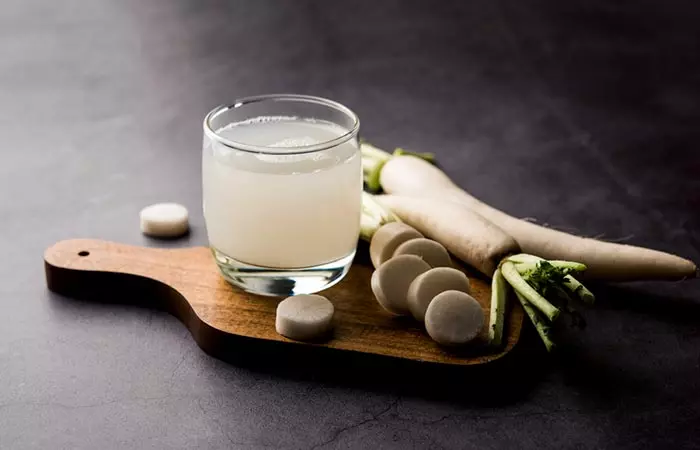
You Will Need
- Fresh radishes
- Juicer
What You Have To Do
- Juice enough radishes to get a 4 ounce glass of fresh juice. If the juice proves too strong, dilute half and half with water.
- Drink this juice to get relief from ascites.
How Often Should You Do This
Consuming a glass of radish juice once or twice a day can provide relief.
Why This Works
Radish is considered to be good for the liver because it acts as a natural detoxifier (17). Radish is considered one of the key elements in treating ascites, especially in cases due to liver problems. You can also put radishes in your salad or eat them raw as well.
9. Bitter Gourd
You Will Need
- Bitter gourd
- A glass of water
What You Have To Do
- Peel the bitter gourd and remove the seeds.
- Cut it into small pieces and grind to a paste. Extract the juice from this paste.
- Dilute about 30ml of the bitter gourd juice with water and drink it.
How Often Should You Do This
The patient needs to consume this at least thrice a day for rapid relief.
Why This Works
Regular consumption of bitter gourd root juice gives instant relief from ascetic soreness. It is beneficial for treating liver disorders because of its tonic and antibilious properties (18).
10. Onions
You Will Need
Onions
What You Have To Do
Add onions to your meals and salads or eat them raw.
How Often Should You Do This
Include onions in your daily diet as it helps in getting rid of the fluid build-up.
Why This Works
Onions are considered to be diuretic and eliminate toxins and excess fluids from the body (19). If eaten continuously for a couple of days, onions can offer relief from the symptoms associated with ascites.
11. Punarnava Herb
You Will Need
- Punarnava root
- A glass of lukewarm water
What You Have To Do
- Grind the herbal root to get a fine powder.
- Take about 3g of this powder with a glass of lukewarm water.
How Often Should You Do This
Take this thrice a day.
Why This Works
This Ayurvedic remedy is also referred to as Hogweed. It is one of the world’s best-known liver healers and is commonly used to treat ascites and dropsy. It has diuretic and expectoranti A type of medication for cough that aids in clearing phlegm (mucus) from the airways and increases breathability. effects on the body (20).
12. Dandelion Tea For Ascites
You Will Need
- 1 oz dandelion root
- 1 pint of boiling water
- 1 teaspoon honey
What You Have To Do
- Steep the dandelion root in hot water for 10 minutes.
- Strain the decoction and let it cool down.
- Add the honey to a cup of this herbal tea and drink it.
How Often Should You Do This
You can drink up to three cups of dandelion root tea in a day.
Why This Works
Dandelion root, also known as gravel root, is a natural diuretic. It helps to reduce the excess fluid in the abdomen. It also aids digestion and has anti-inflammatory effects on the cirrhosis-affected liver (21).
13. Horse Gram Soup
You Will Need
- 1/2 cup horse gram
- 4 cups of water
- 1 tablespoon black peppercorns
- 1 tablespoon chopped garlic
- 1 chopped tomato
- A few coriander leaves
What You Have To Do
- Boil the horse gram for 10 to 12 minutes in a pressure cooker.
- Roast the black peppercorns, garlic, and tomato in a saucepan for a few minutes.
- Add about half of the boiled horse gram to this and mix well. Let it cool.
- Once cooled, grind it to make a paste.
- To this, add some fresh coriander leaves and the remaining boiled horse gram.
- Give it a gentle stir and cook for three to four minutes.
- Have a cup of this soup while it is warm.
How Often Should You Do This
Have a cup of horse gram soup every day.
Why This Works
Soup made from horse gram has proven to be effective in treating ascites. When taken in proper proportions on a daily basis, it shows its effect instantly as it is a diuretic and a tonic. Compared to other diuretics, horse gram contains lesser sodium and eliminates the excess fluids that have accumulated in the abdomen. A study published in the Pakistan Journal of Pharmaceutical Sciences investigated the analgesic, anti-inflammatory, and diuretic properties of Macrotyloma uniflorum (Horse gram/Kulthi) seeds, making them useful for conditions like asthma, bronchitis, and kidney stones. In this study, researchers tested the methanol extract of the seeds at 200mg/kg and 400mg/kg doses, observing significant pain-relieving, anti-inflammatory, and diuretic effects. These findings highlight the potential medicinal benefits of Horse gram in managing various health conditions (22).
14. Buckthorn Roots
You Will Need
- 1 teaspoon buckthorn root powder
- A glass of lukewarm water
What You Have To Do
Ingest the buckthorn root with water, preferably in the morning hours.
How Often Should You Do This
Repeat this every morning.
Why This Works
Buckthorn root hasshave diuretic and laxative agents that help treat ascites effectively (23).
Caution
Do not use this remedy if you are pregnant.
15. Milk Thistle
You Will Need
- 1-2 teaspoons of milk thistle
- 1 cup of hot water
What You Have To Do
- Add one to two teaspoons of milk thistle to a cup of hot water.
- Allow it to steep for 5-10 minutes.
- Strain the tea and drink it up.
How Often Should You Do This
Repeat this every morning.
Why This Works
Milk thistle contains a compound called silymarin that acts as an antioxidant by combating free radicals and lipid peroxidation and also prevents the binding of toxins to the liver cells (24).
In addition to these remedies, your doctor may prescribe Spironolactone or albumin infusion to improve and manage ascites (25).
Ascites can become serious without treatment. Its symptoms can be treated with the home remedies mentioned above. Most of these ingredients are easily available and can be made a part of a healthy diet.
Diet For A Patient With Ascites
Using home remedies will work only to a certain extent, or sometimes, hardly at all, if your diet is not healthy. Nutritional management can play a crucial role in managing ascites and preventing their recurrence. A diet low in fats and cholesterol and sodium restriction is recommended for patients with ascites. Here are some diet recommendations for you:
- Use salt substitutes instead of regular salt (low-salt diet).
- Citrus fruits like mandarins, oranges, grapefruits, etc. are natural diuretics and will help you to remove the excess fluid from your abdomen. Consider exploring more foods for a healthy liver. Incuding them into your diet will help promote the organ’s health and overall well-being.
- Pineapple is also a natural diuretic. You can eat it by itself or drink the juice.
- Mangoes are known to help relieve symptoms of ascites.
- Oats are not only excellent for your heart but also for the treatment of ascites. They are good diuretics as well.
- Eat whole grains and foods rich in fiber.
- Eat a high-protein diet
- Potassium and magnesium-rich foods such as dark leafy vegetables, avocados, mushrooms, beets, and bananas should be consumed. They reduce water retention and lower blood pressure.
- Consume significant portions of melons to stay healthy and fight ascites. Melons aid digestion and help in restoring body fluids.
- Coconut water is rich in potassium and keeps the body hydrated.
Foods To Avoid With Ascites
- Reducing table salt intake is important to treat ascites. Salt leads to liquid accumulation. However, sea salt, with its 72 minerals, can help by pulling water into the cells to help dilute these minerals and drive cellular metabolism.
- Alcohol is one of the major causes of ascites. It should be avoided entirely.
- Avoid high fructose corn syrup.
- Milk and its derivatives may become difficult for the body to digest and are best avoided for ascites patients.
- Avoid starchy food like rice, potato, corn, etc.
- Stay away from items that cause flatulence.
- Avoid processed food items as they contain high amounts of sodium.
 Quick Tip
Quick TipIt is always better to consult your doctor before making any drastic changes to your diet.
Yoga For Ascites
The benefits of yoga are known to all. It stimulates blood and lymph flow in the body and helps in treating multiple ailments. For ascites, these three asanas or poses are recommended by yoga specialists.
- Baddha Padmasana – Also called as the Locked Lotus Pose or Bound Lotus Pose, this asana stimulates chest development and also internally massages the abdominal organs. The circulation improves and excess fluid is directed either out of the body or back to the venous system.
- Lolasana – Known otherwise as the Pendant Pose, this asana is a little higher on the difficulty level. However, it activates the body’s core excellently and helps to relieve the pressure in the abdomen.
- Mayurasana – The delicate Peacock Pose, like the Pendant Pose, activates the abdominal muscles of the body and improves blood and lymph flow. It is a difficult pose and beginners can use some support to do it.
If you are a beginner, please do not attempt the yoga poses by yourself. Practice them under a specialist’s supervision to avoid any complications. In addition to these, it is also important to get good sleep as it heals the body cells, relaxes the body, and restores body homeostasis.
Infographic: 6 Natural Remedies To Help Manage Ascites
Ascites is a medical condition caused by fluid buildup in your abdomen. This fluid may seep into the chest cavity and result in breathing troubles. The good news is we have compiled a list of simple and organic ingredients in your home that can help manage the symptoms and provide relief. Check out the infographic below to know more. Illustration: StyleCraze Design Team
Ascites is a medical condition characterized by fluid accumulation in the abdominal cavity resulting from improper liver function in most cases. Besides liver damage, certain types of cancer, pancreatitis, kidney failure, and clots in certain veins may lead to ascites. It is important to know that excessive alcohol consumption or excess intake of foods with high fructose or sucrose content can cause liver cirrhosis or non-alcoholic fatty liver disease, respectively. Swollen legs, bloating, difficulty breathing in a lying position, and weight gain are common symptoms of ascites. The home remedies discussed in this article cannot cure ascites but help manage the symptoms and support recovery when combined with positive lifestyle changes.
Frequently Asked Questions
What is ascites in medical terms?
Ascites is the accumulation of fluid in the peritoneal cavity, causing abdominal swelling.
This happens when there is an imbalance in the levels of plasma that flows in and out of the blood and lymph vessels (1).
Why does ascites occur in cirrhosis?
In cirrhosis, the liver’s functions are impaired due to scarring of the liver tissue. There is high blood pressure in the venous system of the liver, i.e., there is portal vein hypertension. As a result of this, fluid accumulates in the abdomen. It is a complex process (1).
What is ascites fluid?
Ascites fluid is protein-containing serous fluid that collect in the abdominal cavity.
What color is the abdominal fluid?
The accumulated abdominal fluid is usually clear to pale yellow in color.
What are the complications of ascites?
Ascites, if left untreated, can lead to severe complications. These complications are related to infections or are due to the excess pressure that has built-up on the abdominal organs:
- Bacterial peritonitis (infection of the ascitic fluid)
- Kidney failure
- Protein malnutrition
- Hepatic encephalopathy
- Severe liver complications (26)
Can ascites be prevented?
Measures that aim at keeping your liver healthy work towards preventing ascites. Some preventions tips are listed below:
- Stop drinking alcohol.
- Stop using high fructose corn syrup sweeteners.
- Exercise on a regular basis.
- Eat healthy food.
- Avoid smoking.
- Lower your table salt intake.
- Practice safe sex.
What is the outlook (prognosis) for ascites?
Patients with ascites do not usually have a good prognosis. There is a mortality rate of 15% at a one-year interval. However, this outlook greatly depends on the underlying cause(27).
What is malignant ascites?
Malignant ascites is due to cancer and there ares malignant (cancer) cells in the ascitic fluid. These cancer cells are usually secondary malignancies of primary tumors of ovarian, colorectal, pancreatic, and uterine origin. Such patients have a very poor prognosis, and their treatment options need to be carefully weighed to avoid further complications (26). Cancer accounts for about 10% of ascites cases (28).
What is an ascitic drain?
When medications do not work in removing the fluid build-up, doctors opt for the ascitic drain. It is a process in which a tube is carefully inserted into the abdomen, and the ascitic fluid is drained out into a bag. This process is also called paracentesis (ascitic tap) (29). In some cases, the doctor may even go for liver transplant or transjugular intrahepatic portosystemic shunt (TIPS) procedure to manage this condition (30).
How long does it take for ascites to go down?
The median survival of people with ascites that is not responding to treatment is approximately six months to one year (31).
Can you live a full life with ascites?
The life expectancy of a person with ascites usually depends on the intensity of the symptoms and underlying cause.
Should you drink water with ascites?
The intake of water is rarely restricted to less than 1 liter per day for people with ascites (32).
Is egg good for ascites?
Yes, but only egg whites are helpful for ascites.
Do probiotics help with ascites?
No. According to a study, the intake of probiotics does not help improve ascites (33).
Illustration: Home Remedies For Ascites | Types, Causes, And Symptoms

Image: Stable Diffusion/StyleCraze Design Team
Learn 10 natural remedies to reduce ascites symptoms. Watch this video to get tips on diet, lifestyle, and herbal remedies to manage this condition, now!
Personal Experience: Source
StyleCraze's articles are interwoven with authentic personal narratives that provide depth and resonance to our content. Below are the sources of the personal accounts referenced in this article.
i. Talks about transplanthttps://indraske.wixsite.com/indresaihpscandliver/post/talks-about-transplant
References
Articles on StyleCraze are backed by verified information from peer-reviewed and academic research papers, reputed organizations, research institutions, and medical associations to ensure accuracy and relevance. Read our editorial policy to learn more.
- Ascites
https://www.ncbi.nlm.nih.gov/books/NBK470482/ - Ascitic fluid analysis in the differential diagnosis of ascites: focus on cirrhotic ascites
https://www.ncbi.nlm.nih.gov/pmc/articles/PMC4521252/ - Refractory ascites
https://www.ncbi.nlm.nih.gov/pmc/articles/PMC2886420/ - Chylous ascites: diagnosis, causes and treatment
https://pubmed.ncbi.nlm.nih.gov/11189982/ - Anorexia nervosa and pancreatic ascites
https://www.researchgate.net/publication/19502789_Anorexia_nervosa_and_pancreatic_ascites - Pathophysiology of portal hypertension
https://www.ncbi.nlm.nih.gov/pmc/articles/PMC3971388/ - Hypoalbuminemia
https://www.ncbi.nlm.nih.gov/books/NBK526080/ - The renin-angiotensin-aldosterone system in liver cirrhosis
https://pubmed.ncbi.nlm.nih.gov/2314615/ - Bloating and abdominal distension: clinical approach and management
https://www.ncbi.nlm.nih.gov/pmc/articles/PMC6824367/ - The role of magnesium in edema and blood brain barrier disruption
https://www.ncbi.nlm.nih.gov/books/NBK507252/ - Investigating therapeutic potential of trigonella foenum-graecum l. As our defense mechanism against several human diseases
https://www.ncbi.nlm.nih.gov/pmc/articles/PMC4739449/ - Updates on the anticancer potential of garlic organosulfur compounds and their nanoformulations: Plant therapeutics in cancer management
https://www.ncbi.nlm.nih.gov/pmc/articles/PMC10067574/ - Effects of various fragrant ingredients on desmopressin-induced fluid retention in mice
https://pubmed.ncbi.nlm.nih.gov/20606379/ - Ginger extract (zingiber officinale) has anti-cancer and anti-inflammatory effects on ethionine-induced hepatoma rats
https://www.ncbi.nlm.nih.gov/pmc/articles/PMC2664283/ - Carrot juice administration decreases liver stearoyl-coa desaturase 1 and improves docosahexaenoic acid levels, but not steatosis in high fructose diet-fed weanling wistar rats
https://www.ncbi.nlm.nih.gov/pmc/articles/PMC5063201/ - The effect of abdominal massage in reducing malignant ascites symptoms
https://pubmed.ncbi.nlm.nih.gov/25558030/ - An open label pilot study to evaluate the efficacy of Spanish black radish on the induction of phase I and phase II enzymes in healthy male subjects
https://www.ncbi.nlm.nih.gov/pmc/articles/PMC4295395/ - Phytochemical and pharmacological review of Lagenaria sicereria
https://www.ncbi.nlm.nih.gov/pmc/articles/PMC3117318/ - The effects of Allium cepa L. (onion) and its active constituents on metabolic syndrome: A review
https://www.ncbi.nlm.nih.gov/pmc/articles/PMC7894628/ - Inhibition of human cervical cancer cell growth by ethanolic extract of boerhaavia diffusa linn. (punarnava) root
https://www.ncbi.nlm.nih.gov/pmc/articles/PMC3159392/ - Protective effects of taraxacum officinale l. (dandelion) root extract in experimental acute on chronic liver failure
https://www.ncbi.nlm.nih.gov/pmc/articles/PMC8063808/ - Analgesic, anti-inflammatory and diuretic activities of macrotyloma uniflorum (lam.) verdc
https://pubmed.ncbi.nlm.nih.gov/30150181/ - Sea buckthorn in plant based diets. An analytical approach of sea buckthorn fruits composition: nutritional value, applications, and health benefits
https://www.ncbi.nlm.nih.gov/pmc/articles/PMC8431556/ - Milk thistle in liver diseases: past, present, future
https://pubmed.ncbi.nlm.nih.gov/20564545/ - Long-term albumin infusion improves survival in patients with cirrhosis and ascites: An unblinded randomized trial
https://www.ncbi.nlm.nih.gov/pmc/articles/PMC4124318/ - Cirrhotic ascites review: Pathophysiology, diagnosis and management
https://www.ncbi.nlm.nih.gov/pmc/articles/PMC3664283/ - Natural history of patients hospitalized for management of cirrhotic ascites
https://pubmed.ncbi.nlm.nih.gov/17081806/ - Malignant ascites in pancreatic cancer: Pathophysiology, diagnosis, molecular characterization, and therapeutic strategies
https://www.ncbi.nlm.nih.gov/pmc/articles/PMC10060830/ - Paracentesis
https://www.ncbi.nlm.nih.gov/books/NBK435998/ - Transjugular intrahepatic portosystemic shunt
https://www.ncbi.nlm.nih.gov/books/NBK513268/ - Ascites in patients with cirrhosis
https://www.ncbi.nlm.nih.gov/pmc/articles/PMC3860926/ - Management of cirrhotic ascites
https://www.ncbi.nlm.nih.gov/pmc/articles/PMC4416972/ - Is there a role for probiotics in liver disease?
https://www.ncbi.nlm.nih.gov/pmc/articles/PMC4243598/
Read full bio of Dr. Bhakti Kapse
Read full bio of Kushneet Kukreja
Read full bio of Arshiya Syeda
Read full bio of Dipti Sharma









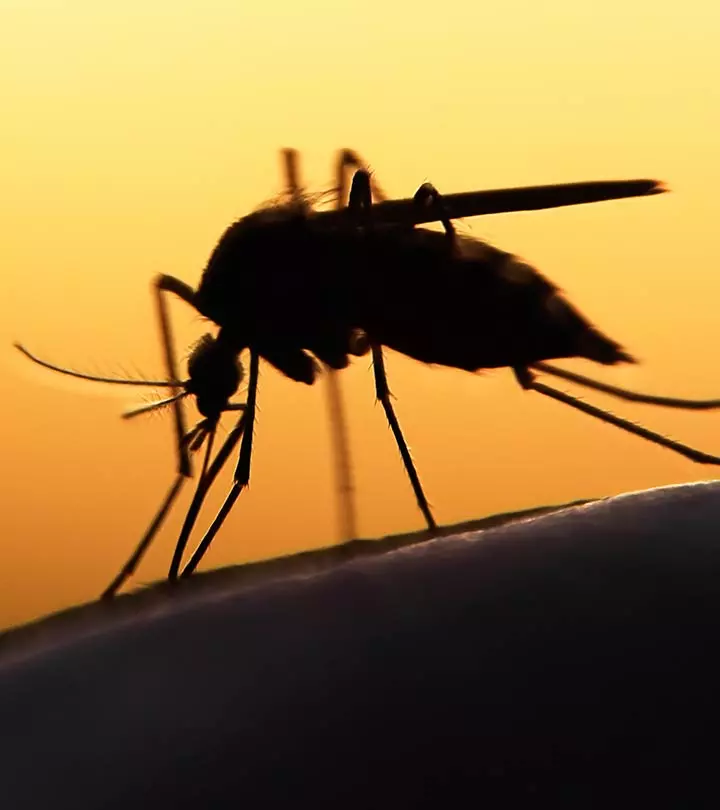


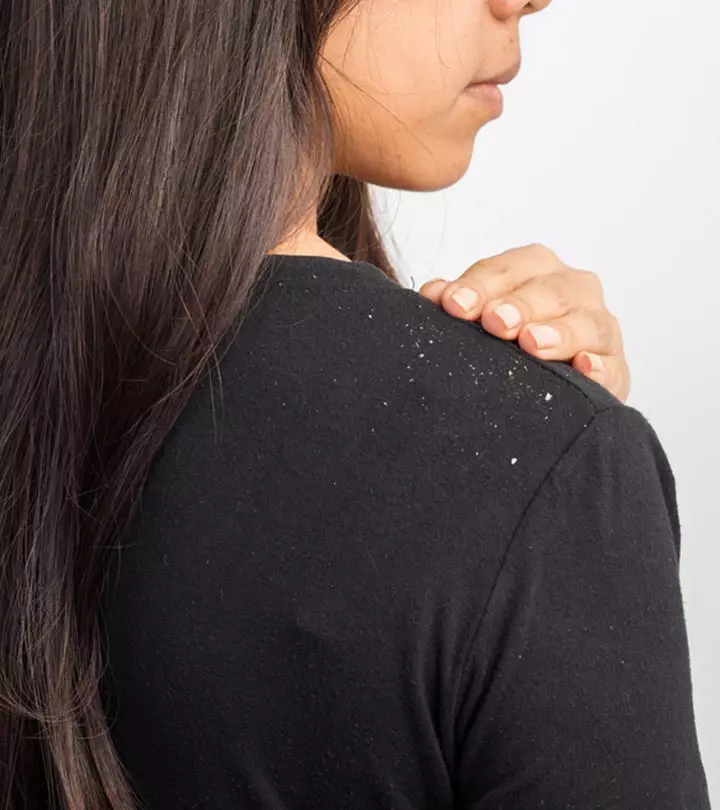



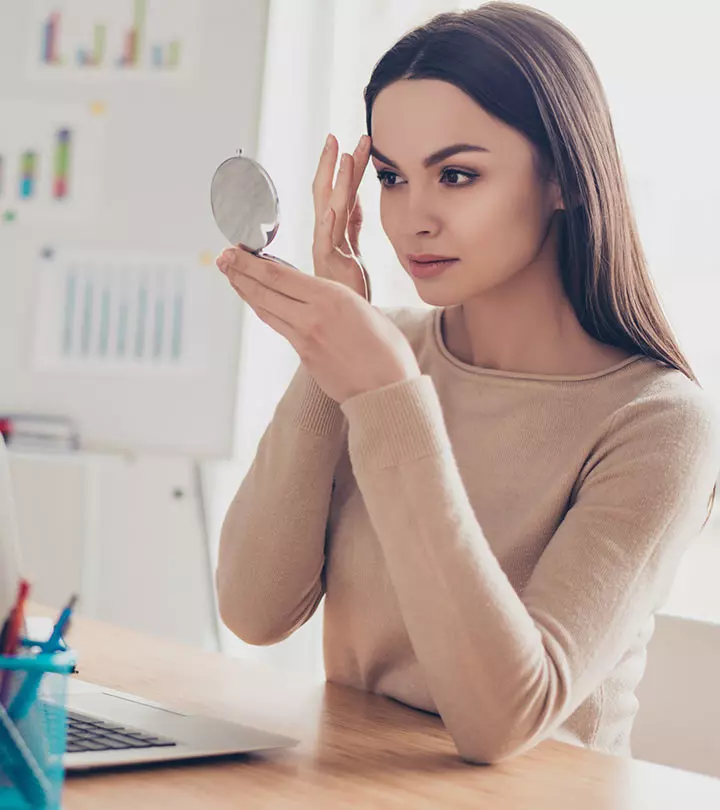









Community Experiences
Join the conversation and become a part of our empowering community! Share your stories, experiences, and insights to connect with other beauty, lifestyle, and health enthusiasts.